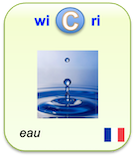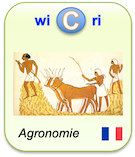Gender identification of shovelnose sturgeon using ultrasonic and endoscopic imagery and the application of the method to the pallid sturgeon
Identifieur interne : 000237 ( PascalFrancis/Checkpoint ); précédent : 000236; suivant : 000238Gender identification of shovelnose sturgeon using ultrasonic and endoscopic imagery and the application of the method to the pallid sturgeon
Auteurs : M. L. Wildhaber [États-Unis] ; D. M. Papoulias [États-Unis] ; A. J. Delonay [États-Unis] ; D. E. Tillitt [États-Unis] ; J. L. Bryan [États-Unis] ; M. L. Annis [États-Unis] ; J. A. Allert [États-Unis]Source :
- Journal of fish biology [ 0022-1112 ] ; 2005.
Descripteurs français
English descriptors
- KwdEn :
Abstract
Monthly sampling of shovelnose sturgeon Scaphirhynchus platorynchus, a biological surrogate for the endangered pallid sturgeon Scaphirhynchus albus, was conducted to develop a multi-seasonal profile of reproductive stages. Data collected included histological characteristics of gonads from wild caught fish and laboratory and field ultrasonic and endoscopic images. These data were used to compare effectiveness of ultrasonic and endoscopic techniques at identifying gender of adult shovelnose sturgeon at different reproductive stages. The least invasive method (i.e. ultrasound) was least effective while the most invasive (i.e. endoscope through an abdominal incision) was the most effective at identifying shovelnose sturgeon gender. In most cases, success rate for identifying males was greater than females, with success at identifying both genders greater in more advanced reproductive stages. Concomitantly, for most months average reproductive stage was more advanced for males than females. April and May were the months with the most advanced reproductive stage, and were the months when ultrasound was most effective. Methods were also applied in the Upper Missouri River to validate their use on pallid sturgeon Scaphirhynchus albus. Ultrasound was successful at identifying pallid sturgeon gender, however, endoscopic examination through the urogenital duct was only successful at identifying pallid sturgeon gender when the urogenital duct was not opaque.
Affiliations:
Links toward previous steps (curation, corpus...)
Links to Exploration step
Pascal:05-0321547Le document en format XML
<record><TEI><teiHeader><fileDesc><titleStmt><title xml:lang="en" level="a">Gender identification of shovelnose sturgeon using ultrasonic and endoscopic imagery and the application of the method to the pallid sturgeon</title><author><name sortKey="Wildhaber, M L" sort="Wildhaber, M L" uniqKey="Wildhaber M" first="M. L." last="Wildhaber">M. L. Wildhaber</name><affiliation wicri:level="1"><inist:fA14 i1="01"><s1>U.S. Geological Survey, Columbia Environmental Research Center, 4200 New Haven Road</s1><s2>Columbia, Missouri 65201</s2><s3>USA</s3><sZ>1 aut.</sZ><sZ>2 aut.</sZ><sZ>3 aut.</sZ><sZ>4 aut.</sZ><sZ>5 aut.</sZ><sZ>6 aut.</sZ><sZ>7 aut.</sZ></inist:fA14><country>États-Unis</country><wicri:noRegion>Columbia, Missouri 65201</wicri:noRegion></affiliation></author><author><name sortKey="Papoulias, D M" sort="Papoulias, D M" uniqKey="Papoulias D" first="D. M." last="Papoulias">D. M. Papoulias</name><affiliation wicri:level="1"><inist:fA14 i1="01"><s1>U.S. Geological Survey, Columbia Environmental Research Center, 4200 New Haven Road</s1><s2>Columbia, Missouri 65201</s2><s3>USA</s3><sZ>1 aut.</sZ><sZ>2 aut.</sZ><sZ>3 aut.</sZ><sZ>4 aut.</sZ><sZ>5 aut.</sZ><sZ>6 aut.</sZ><sZ>7 aut.</sZ></inist:fA14><country>États-Unis</country><wicri:noRegion>Columbia, Missouri 65201</wicri:noRegion></affiliation></author><author><name sortKey="Delonay, A J" sort="Delonay, A J" uniqKey="Delonay A" first="A. J." last="Delonay">A. J. Delonay</name><affiliation wicri:level="1"><inist:fA14 i1="01"><s1>U.S. Geological Survey, Columbia Environmental Research Center, 4200 New Haven Road</s1><s2>Columbia, Missouri 65201</s2><s3>USA</s3><sZ>1 aut.</sZ><sZ>2 aut.</sZ><sZ>3 aut.</sZ><sZ>4 aut.</sZ><sZ>5 aut.</sZ><sZ>6 aut.</sZ><sZ>7 aut.</sZ></inist:fA14><country>États-Unis</country><wicri:noRegion>Columbia, Missouri 65201</wicri:noRegion></affiliation></author><author><name sortKey="Tillitt, D E" sort="Tillitt, D E" uniqKey="Tillitt D" first="D. E." last="Tillitt">D. E. Tillitt</name><affiliation wicri:level="1"><inist:fA14 i1="01"><s1>U.S. Geological Survey, Columbia Environmental Research Center, 4200 New Haven Road</s1><s2>Columbia, Missouri 65201</s2><s3>USA</s3><sZ>1 aut.</sZ><sZ>2 aut.</sZ><sZ>3 aut.</sZ><sZ>4 aut.</sZ><sZ>5 aut.</sZ><sZ>6 aut.</sZ><sZ>7 aut.</sZ></inist:fA14><country>États-Unis</country><wicri:noRegion>Columbia, Missouri 65201</wicri:noRegion></affiliation></author><author><name sortKey="Bryan, J L" sort="Bryan, J L" uniqKey="Bryan J" first="J. L." last="Bryan">J. L. Bryan</name><affiliation wicri:level="1"><inist:fA14 i1="01"><s1>U.S. Geological Survey, Columbia Environmental Research Center, 4200 New Haven Road</s1><s2>Columbia, Missouri 65201</s2><s3>USA</s3><sZ>1 aut.</sZ><sZ>2 aut.</sZ><sZ>3 aut.</sZ><sZ>4 aut.</sZ><sZ>5 aut.</sZ><sZ>6 aut.</sZ><sZ>7 aut.</sZ></inist:fA14><country>États-Unis</country><wicri:noRegion>Columbia, Missouri 65201</wicri:noRegion></affiliation></author><author><name sortKey="Annis, M L" sort="Annis, M L" uniqKey="Annis M" first="M. L." last="Annis">M. L. Annis</name><affiliation wicri:level="1"><inist:fA14 i1="01"><s1>U.S. Geological Survey, Columbia Environmental Research Center, 4200 New Haven Road</s1><s2>Columbia, Missouri 65201</s2><s3>USA</s3><sZ>1 aut.</sZ><sZ>2 aut.</sZ><sZ>3 aut.</sZ><sZ>4 aut.</sZ><sZ>5 aut.</sZ><sZ>6 aut.</sZ><sZ>7 aut.</sZ></inist:fA14><country>États-Unis</country><wicri:noRegion>Columbia, Missouri 65201</wicri:noRegion></affiliation></author><author><name sortKey="Allert, J A" sort="Allert, J A" uniqKey="Allert J" first="J. A." last="Allert">J. A. Allert</name><affiliation wicri:level="1"><inist:fA14 i1="01"><s1>U.S. Geological Survey, Columbia Environmental Research Center, 4200 New Haven Road</s1><s2>Columbia, Missouri 65201</s2><s3>USA</s3><sZ>1 aut.</sZ><sZ>2 aut.</sZ><sZ>3 aut.</sZ><sZ>4 aut.</sZ><sZ>5 aut.</sZ><sZ>6 aut.</sZ><sZ>7 aut.</sZ></inist:fA14><country>États-Unis</country><wicri:noRegion>Columbia, Missouri 65201</wicri:noRegion></affiliation></author></titleStmt><publicationStmt><idno type="wicri:source">INIST</idno><idno type="inist">05-0321547</idno><date when="2005">2005</date><idno type="stanalyst">PASCAL 05-0321547 INIST</idno><idno type="RBID">Pascal:05-0321547</idno><idno type="wicri:Area/PascalFrancis/Corpus">000238</idno><idno type="wicri:Area/PascalFrancis/Curation">000138</idno><idno type="wicri:Area/PascalFrancis/Checkpoint">000237</idno><idno type="wicri:explorRef" wicri:stream="PascalFrancis" wicri:step="Checkpoint">000237</idno></publicationStmt><sourceDesc><biblStruct><analytic><title xml:lang="en" level="a">Gender identification of shovelnose sturgeon using ultrasonic and endoscopic imagery and the application of the method to the pallid sturgeon</title><author><name sortKey="Wildhaber, M L" sort="Wildhaber, M L" uniqKey="Wildhaber M" first="M. L." last="Wildhaber">M. L. Wildhaber</name><affiliation wicri:level="1"><inist:fA14 i1="01"><s1>U.S. Geological Survey, Columbia Environmental Research Center, 4200 New Haven Road</s1><s2>Columbia, Missouri 65201</s2><s3>USA</s3><sZ>1 aut.</sZ><sZ>2 aut.</sZ><sZ>3 aut.</sZ><sZ>4 aut.</sZ><sZ>5 aut.</sZ><sZ>6 aut.</sZ><sZ>7 aut.</sZ></inist:fA14><country>États-Unis</country><wicri:noRegion>Columbia, Missouri 65201</wicri:noRegion></affiliation></author><author><name sortKey="Papoulias, D M" sort="Papoulias, D M" uniqKey="Papoulias D" first="D. M." last="Papoulias">D. M. Papoulias</name><affiliation wicri:level="1"><inist:fA14 i1="01"><s1>U.S. Geological Survey, Columbia Environmental Research Center, 4200 New Haven Road</s1><s2>Columbia, Missouri 65201</s2><s3>USA</s3><sZ>1 aut.</sZ><sZ>2 aut.</sZ><sZ>3 aut.</sZ><sZ>4 aut.</sZ><sZ>5 aut.</sZ><sZ>6 aut.</sZ><sZ>7 aut.</sZ></inist:fA14><country>États-Unis</country><wicri:noRegion>Columbia, Missouri 65201</wicri:noRegion></affiliation></author><author><name sortKey="Delonay, A J" sort="Delonay, A J" uniqKey="Delonay A" first="A. J." last="Delonay">A. J. Delonay</name><affiliation wicri:level="1"><inist:fA14 i1="01"><s1>U.S. Geological Survey, Columbia Environmental Research Center, 4200 New Haven Road</s1><s2>Columbia, Missouri 65201</s2><s3>USA</s3><sZ>1 aut.</sZ><sZ>2 aut.</sZ><sZ>3 aut.</sZ><sZ>4 aut.</sZ><sZ>5 aut.</sZ><sZ>6 aut.</sZ><sZ>7 aut.</sZ></inist:fA14><country>États-Unis</country><wicri:noRegion>Columbia, Missouri 65201</wicri:noRegion></affiliation></author><author><name sortKey="Tillitt, D E" sort="Tillitt, D E" uniqKey="Tillitt D" first="D. E." last="Tillitt">D. E. Tillitt</name><affiliation wicri:level="1"><inist:fA14 i1="01"><s1>U.S. Geological Survey, Columbia Environmental Research Center, 4200 New Haven Road</s1><s2>Columbia, Missouri 65201</s2><s3>USA</s3><sZ>1 aut.</sZ><sZ>2 aut.</sZ><sZ>3 aut.</sZ><sZ>4 aut.</sZ><sZ>5 aut.</sZ><sZ>6 aut.</sZ><sZ>7 aut.</sZ></inist:fA14><country>États-Unis</country><wicri:noRegion>Columbia, Missouri 65201</wicri:noRegion></affiliation></author><author><name sortKey="Bryan, J L" sort="Bryan, J L" uniqKey="Bryan J" first="J. L." last="Bryan">J. L. Bryan</name><affiliation wicri:level="1"><inist:fA14 i1="01"><s1>U.S. Geological Survey, Columbia Environmental Research Center, 4200 New Haven Road</s1><s2>Columbia, Missouri 65201</s2><s3>USA</s3><sZ>1 aut.</sZ><sZ>2 aut.</sZ><sZ>3 aut.</sZ><sZ>4 aut.</sZ><sZ>5 aut.</sZ><sZ>6 aut.</sZ><sZ>7 aut.</sZ></inist:fA14><country>États-Unis</country><wicri:noRegion>Columbia, Missouri 65201</wicri:noRegion></affiliation></author><author><name sortKey="Annis, M L" sort="Annis, M L" uniqKey="Annis M" first="M. L." last="Annis">M. L. Annis</name><affiliation wicri:level="1"><inist:fA14 i1="01"><s1>U.S. Geological Survey, Columbia Environmental Research Center, 4200 New Haven Road</s1><s2>Columbia, Missouri 65201</s2><s3>USA</s3><sZ>1 aut.</sZ><sZ>2 aut.</sZ><sZ>3 aut.</sZ><sZ>4 aut.</sZ><sZ>5 aut.</sZ><sZ>6 aut.</sZ><sZ>7 aut.</sZ></inist:fA14><country>États-Unis</country><wicri:noRegion>Columbia, Missouri 65201</wicri:noRegion></affiliation></author><author><name sortKey="Allert, J A" sort="Allert, J A" uniqKey="Allert J" first="J. A." last="Allert">J. A. Allert</name><affiliation wicri:level="1"><inist:fA14 i1="01"><s1>U.S. Geological Survey, Columbia Environmental Research Center, 4200 New Haven Road</s1><s2>Columbia, Missouri 65201</s2><s3>USA</s3><sZ>1 aut.</sZ><sZ>2 aut.</sZ><sZ>3 aut.</sZ><sZ>4 aut.</sZ><sZ>5 aut.</sZ><sZ>6 aut.</sZ><sZ>7 aut.</sZ></inist:fA14><country>États-Unis</country><wicri:noRegion>Columbia, Missouri 65201</wicri:noRegion></affiliation></author></analytic><series><title level="j" type="main">Journal of fish biology</title><title level="j" type="abbreviated">J. fish biol.</title><idno type="ISSN">0022-1112</idno><imprint><date when="2005">2005</date></imprint></series></biblStruct></sourceDesc><seriesStmt><title level="j" type="main">Journal of fish biology</title><title level="j" type="abbreviated">J. fish biol.</title><idno type="ISSN">0022-1112</idno></seriesStmt></fileDesc><profileDesc><textClass><keywords scheme="KwdEn" xml:lang="en"><term>Acipenser sturio</term><term>Biology</term><term>Method</term><term>Pisces</term><term>Sex</term></keywords><keywords scheme="Pascal" xml:lang="fr"><term>Sexe</term><term>Méthode</term><term>Pisces</term><term>Biologie</term><term>Acipenser sturio</term></keywords><keywords scheme="Wicri" type="topic" xml:lang="fr"><term>Biologie</term></keywords></textClass></profileDesc></teiHeader><front><div type="abstract" xml:lang="en">Monthly sampling of shovelnose sturgeon Scaphirhynchus platorynchus, a biological surrogate for the endangered pallid sturgeon Scaphirhynchus albus, was conducted to develop a multi-seasonal profile of reproductive stages. Data collected included histological characteristics of gonads from wild caught fish and laboratory and field ultrasonic and endoscopic images. These data were used to compare effectiveness of ultrasonic and endoscopic techniques at identifying gender of adult shovelnose sturgeon at different reproductive stages. The least invasive method (i.e. ultrasound) was least effective while the most invasive (i.e. endoscope through an abdominal incision) was the most effective at identifying shovelnose sturgeon gender. In most cases, success rate for identifying males was greater than females, with success at identifying both genders greater in more advanced reproductive stages. Concomitantly, for most months average reproductive stage was more advanced for males than females. April and May were the months with the most advanced reproductive stage, and were the months when ultrasound was most effective. Methods were also applied in the Upper Missouri River to validate their use on pallid sturgeon Scaphirhynchus albus. Ultrasound was successful at identifying pallid sturgeon gender, however, endoscopic examination through the urogenital duct was only successful at identifying pallid sturgeon gender when the urogenital duct was not opaque.</div></front></TEI><inist><standard h6="B"><pA><fA01 i1="01" i2="1"><s0>0022-1112</s0></fA01><fA02 i1="01"><s0>JFIBA9</s0></fA02><fA03 i2="1"><s0>J. fish biol.</s0></fA03><fA05><s2>67</s2></fA05><fA06><s2>1</s2></fA06><fA08 i1="01" i2="1" l="ENG"><s1>Gender identification of shovelnose sturgeon using ultrasonic and endoscopic imagery and the application of the method to the pallid sturgeon</s1></fA08><fA11 i1="01" i2="1"><s1>WILDHABER (M. L.)</s1></fA11><fA11 i1="02" i2="1"><s1>PAPOULIAS (D. M.)</s1></fA11><fA11 i1="03" i2="1"><s1>DELONAY (A. J.)</s1></fA11><fA11 i1="04" i2="1"><s1>TILLITT (D. E.)</s1></fA11><fA11 i1="05" i2="1"><s1>BRYAN (J. L.)</s1></fA11><fA11 i1="06" i2="1"><s1>ANNIS (M. L.)</s1></fA11><fA11 i1="07" i2="1"><s1>ALLERT (J. A.)</s1></fA11><fA14 i1="01"><s1>U.S. Geological Survey, Columbia Environmental Research Center, 4200 New Haven Road</s1><s2>Columbia, Missouri 65201</s2><s3>USA</s3><sZ>1 aut.</sZ><sZ>2 aut.</sZ><sZ>3 aut.</sZ><sZ>4 aut.</sZ><sZ>5 aut.</sZ><sZ>6 aut.</sZ><sZ>7 aut.</sZ></fA14><fA20><s1>114-132</s1></fA20><fA21><s1>2005</s1></fA21><fA23 i1="01"><s0>ENG</s0></fA23><fA43 i1="01"><s1>INIST</s1><s2>14279</s2><s5>354000132197050070</s5></fA43><fA44><s0>0000</s0><s1>© 2005 INIST-CNRS. All rights reserved.</s1></fA44><fA45><s0>1 p.1/2</s0></fA45><fA47 i1="01" i2="1"><s0>05-0321547</s0></fA47><fA60><s1>P</s1></fA60><fA61><s0>A</s0></fA61><fA64 i1="01" i2="1"><s0>Journal of fish biology</s0></fA64><fA66 i1="01"><s0>GBR</s0></fA66><fC01 i1="01" l="ENG"><s0>Monthly sampling of shovelnose sturgeon Scaphirhynchus platorynchus, a biological surrogate for the endangered pallid sturgeon Scaphirhynchus albus, was conducted to develop a multi-seasonal profile of reproductive stages. Data collected included histological characteristics of gonads from wild caught fish and laboratory and field ultrasonic and endoscopic images. These data were used to compare effectiveness of ultrasonic and endoscopic techniques at identifying gender of adult shovelnose sturgeon at different reproductive stages. The least invasive method (i.e. ultrasound) was least effective while the most invasive (i.e. endoscope through an abdominal incision) was the most effective at identifying shovelnose sturgeon gender. In most cases, success rate for identifying males was greater than females, with success at identifying both genders greater in more advanced reproductive stages. Concomitantly, for most months average reproductive stage was more advanced for males than females. April and May were the months with the most advanced reproductive stage, and were the months when ultrasound was most effective. Methods were also applied in the Upper Missouri River to validate their use on pallid sturgeon Scaphirhynchus albus. Ultrasound was successful at identifying pallid sturgeon gender, however, endoscopic examination through the urogenital duct was only successful at identifying pallid sturgeon gender when the urogenital duct was not opaque.</s0></fC01><fC02 i1="01" i2="X"><s0>002A15B</s0></fC02><fC03 i1="01" i2="X" l="FRE"><s0>Sexe</s0><s5>01</s5></fC03><fC03 i1="01" i2="X" l="ENG"><s0>Sex</s0><s5>01</s5></fC03><fC03 i1="01" i2="X" l="SPA"><s0>Sexo</s0><s5>01</s5></fC03><fC03 i1="02" i2="X" l="FRE"><s0>Méthode</s0><s5>02</s5></fC03><fC03 i1="02" i2="X" l="ENG"><s0>Method</s0><s5>02</s5></fC03><fC03 i1="02" i2="X" l="SPA"><s0>Método</s0><s5>02</s5></fC03><fC03 i1="03" i2="X" l="FRE"><s0>Pisces</s0><s2>NS</s2><s5>03</s5></fC03><fC03 i1="03" i2="X" l="ENG"><s0>Pisces</s0><s2>NS</s2><s5>03</s5></fC03><fC03 i1="03" i2="X" l="SPA"><s0>Pisces</s0><s2>NS</s2><s5>03</s5></fC03><fC03 i1="04" i2="X" l="FRE"><s0>Biologie</s0><s5>04</s5></fC03><fC03 i1="04" i2="X" l="ENG"><s0>Biology</s0><s5>04</s5></fC03><fC03 i1="04" i2="X" l="SPA"><s0>Biología</s0><s5>04</s5></fC03><fC03 i1="05" i2="X" l="FRE"><s0>Acipenser sturio</s0><s2>NS</s2><s5>55</s5></fC03><fC03 i1="05" i2="X" l="ENG"><s0>Acipenser sturio</s0><s2>NS</s2><s5>55</s5></fC03><fC03 i1="05" i2="X" l="SPA"><s0>Acipenser sturio</s0><s2>NS</s2><s5>55</s5></fC03><fC07 i1="01" i2="X" l="FRE"><s0>Vertebrata</s0><s2>NS</s2></fC07><fC07 i1="01" i2="X" l="ENG"><s0>Vertebrata</s0><s2>NS</s2></fC07><fC07 i1="01" i2="X" l="SPA"><s0>Vertebrata</s0><s2>NS</s2></fC07><fC07 i1="02" i2="X" l="FRE"><s0>Acipenseridae</s0><s4>INC</s4><s5>87</s5></fC07><fN21><s1>227</s1></fN21><fN44 i1="01"><s1>OTO</s1></fN44><fN82><s1>OTO</s1></fN82></pA></standard></inist><affiliations><list><country><li>États-Unis</li></country></list><tree><country name="États-Unis"><noRegion><name sortKey="Wildhaber, M L" sort="Wildhaber, M L" uniqKey="Wildhaber M" first="M. L." last="Wildhaber">M. L. Wildhaber</name></noRegion><name sortKey="Allert, J A" sort="Allert, J A" uniqKey="Allert J" first="J. A." last="Allert">J. A. Allert</name><name sortKey="Annis, M L" sort="Annis, M L" uniqKey="Annis M" first="M. L." last="Annis">M. L. Annis</name><name sortKey="Bryan, J L" sort="Bryan, J L" uniqKey="Bryan J" first="J. L." last="Bryan">J. L. Bryan</name><name sortKey="Delonay, A J" sort="Delonay, A J" uniqKey="Delonay A" first="A. J." last="Delonay">A. J. Delonay</name><name sortKey="Papoulias, D M" sort="Papoulias, D M" uniqKey="Papoulias D" first="D. M." last="Papoulias">D. M. Papoulias</name><name sortKey="Tillitt, D E" sort="Tillitt, D E" uniqKey="Tillitt D" first="D. E." last="Tillitt">D. E. Tillitt</name></country></tree></affiliations></record>Pour manipuler ce document sous Unix (Dilib)
EXPLOR_STEP=$WICRI_ROOT/Wicri/Eau/explor/EsturgeonV1/Data/PascalFrancis/Checkpoint
HfdSelect -h $EXPLOR_STEP/biblio.hfd -nk 000237 | SxmlIndent | more
Ou
HfdSelect -h $EXPLOR_AREA/Data/PascalFrancis/Checkpoint/biblio.hfd -nk 000237 | SxmlIndent | more
Pour mettre un lien sur cette page dans le réseau Wicri
{{Explor lien
|wiki= Wicri/Eau
|area= EsturgeonV1
|flux= PascalFrancis
|étape= Checkpoint
|type= RBID
|clé= Pascal:05-0321547
|texte= Gender identification of shovelnose sturgeon using ultrasonic and endoscopic imagery and the application of the method to the pallid sturgeon
}}
|
| This area was generated with Dilib version V0.6.27. | |

